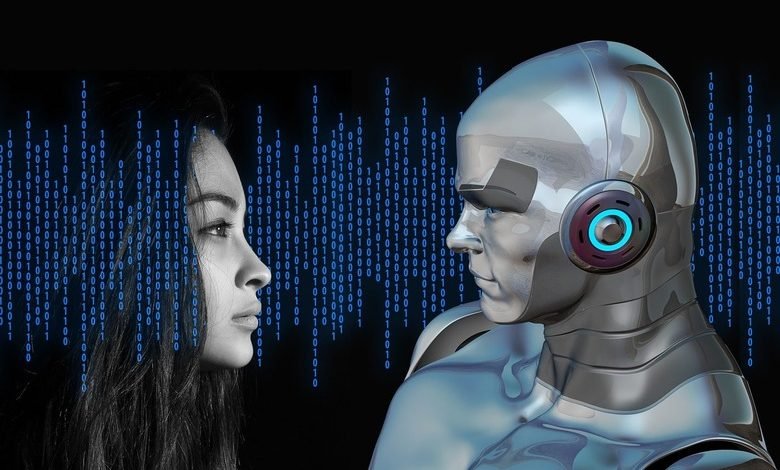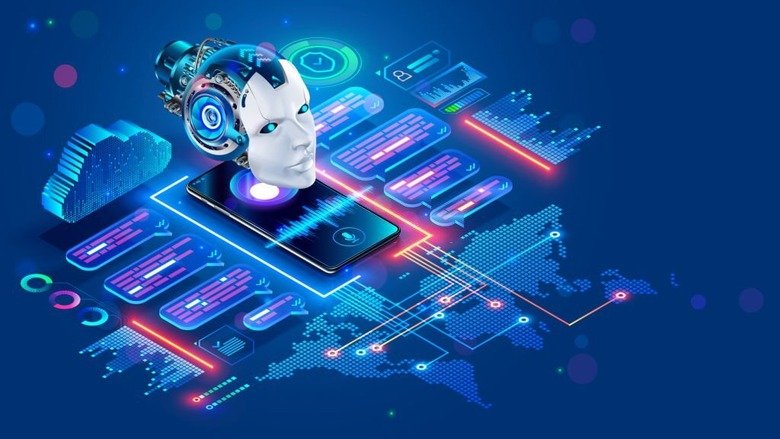Is AI Close to Dethroning Translation Companies

The time-old speculation that machines will one day eliminate the need for human labour has penetrated the professional translation service industry.
Indeed, machines can imitate human behaviour exceptionally well. They can play chess, create exquisite paintings, compose music, and master countless other skills that take humans years to acquire.
When it comes to language, machine translation software (MT) is already in full swing. At the same time, Post-Edit Machine Translations (PEMT) are slowly becoming today’s prevailing translation method.
So, what does all of this imply for the future of certified translation companies and agencies specialising in providing translation services? Will the machine translations and Artificial Intelligence fully take-over the linguistic industry, or are human translation services with post-editing the future? Let’s find out!
What is AI Translation?

If you think about it, language can be reduced to large data sets and rules. The data sets are words and their meanings (semantics), while the rules are grammar (syntax). Hence, AI lends itself well to language translation.
However, AI goes beyond the standard word-to-word MT tools, leading to unfortunate misunderstandings. Instead, AI translation tools can understand complex sentences, tone of voice, everyday expressions and idioms, slang, and even jokes.
Why is There a Need for AI in Translation?
The growing supply of AI translation resources reflects an ever-growing demand for a professional translation service.
Increasing globalization has aroused an acute need for translation services across all sectors. Tech, finance and banking, education, art and entertainment, health and medicine, and travel and tourism are only some of the countless industries routinely benefitting from professional translation services.
The global language services market has rapidly grown as the world becomes increasingly interconnected. From 2009 to 2019, the market more than doubled, reaching 49.6 billion U.S dollars. As of 2022, the market size is estimated to be around 57.7 billion.
At the same time, some professional translators and interpreters are reporting higher levels of occupational stress and burnout than in previous years.
Hence, there is growing concern that the size of the translation and interpretation workforce will be unable to keep up with the ever-increasing demand.
How Does AI Tackle These Challenges?
Artificial Intelligence can assist translators and interpreters in the following ways:
- AI translation tools can provide instantaneous translations. Regarding repetitive or jargon-heavy content, AI translation can save precious man hours.
- Since MT can handle high-volume, low-priority content, translators can focus their energy on large-scale projects requiring more care and nuance.
- AI translations offer high-accuracy translations without much financial overhead.
Also Read:
Will AI Replace Translation Companies? A Debate
Considering the absolute value of AI translation, will machines make professional translation service providers obsolete in the near future?
Here are some points to consider for those interested in this topic.
Point 1: Can AI do everything a translation company can do?
AI translation tools can perform certain translation tasks that translators repeatedly do with high accuracy. However, a professional translation service provider does more than simply translate content word-for-word.
Instead, the role of translation companies extends far beyond the scope of any AI translation, including:
- Localizing the content to the targeted culture and avoiding culturally insensitive or problematic words
- Contextualizing the translations to each language’s syntax, colloquialisms, and expressions
- Identifying language subtleties and reading between the lines
- Reviewing and editing the original content to make translations easier
- Learning and understanding the subject matter of jargon-heavy content, such as legal documents and technical texts, before translating them.
Point 2: Do AI translators have lower error rates?
AI translation can employ machine learning to produce high-accuracy translations. However, the accuracy level decreases as the content’s complexity increases.
It doesn’t even have to be highly academic or jargon-heavy content for machines to fumble. Mistranslations of simple and common catchphrases have wreaked havoc on some of the biggest brands.
For example, Coors’ beer company infamously mistranslated their catchphrase “turn it loose” to its literal Spanish translation, encouraging its Spanish customers to “suffer from diarrhoea.”
Here’s another interesting article talking about the dangers of machine translations.
Point 3: How advanced is AI translation?
There are well over 7,000 spoken languages in the world today. Moreover, each language has its own dialect and vernacular, which do not always stick to established rules or parameters.
In other words, language is highly flexible and nuanced.
Unfortunately, many of the popular AI translation tools you will find today, such as Google Translate, only cater to 100-200 languages.
Even if you manage to locate your targeted language, machines are infamously bad at recognizing shades of emotion and cultural nuances.
Hence, even despite booming advancements and ongoing developments, AI translation tools are still very much in their preliminary phase.
Point 4: Is AI ready for full-fledged translation use?
Despite the widespread use of AI translation tools, artificial intelligence is still in its infancy. It will still be at least a few decades until AI can perform all the same tasks as professional translation service providers.
Furthermore, it is essential to remember that human input is still very much necessary for AI translators to continue to develop.
For example, the most dominant form of AI translation, PEMT, is ultimately dependent upon feedback from human translators. Once machine translators translate content, their human counterparts must proofread and amend the content before putting forth the final product.
Conclusion
The proliferation of artificial intelligence in language has created fears of unemployment for professional translation service providers across the globe.
However, the far more plausible scenario is that AI will assist human translators, not replace them altogether. For the foreseeable future, AI will not be able to produce translations without human interjection at one stage or another.
Instead, AI will only help reduce redundant and mundane tasks so that translators can focus their attention on more complex and nuanced translation tasks.







